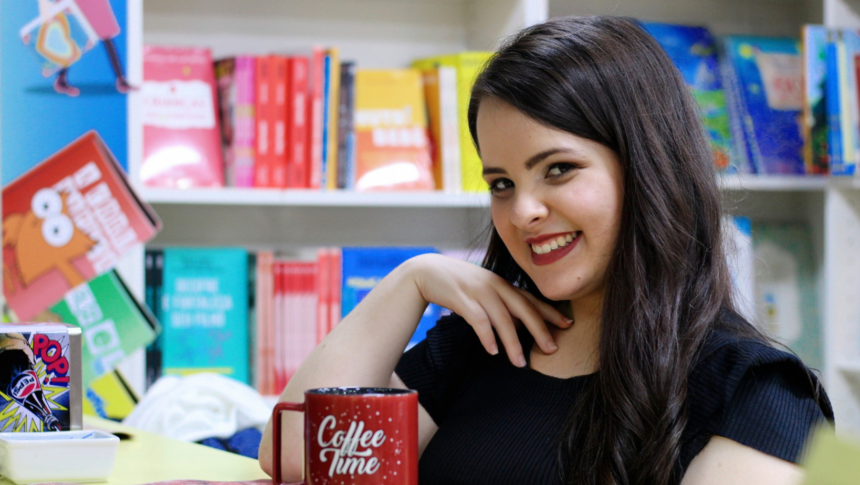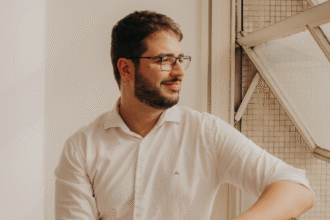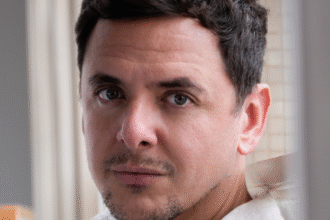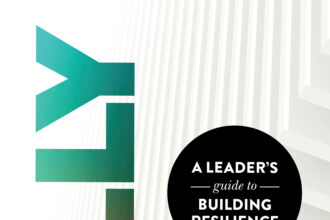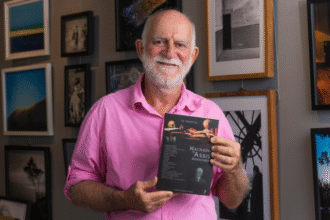In a post-global collapse world, where an oppressive government controls citizens’ freedom and survival depends on obedience, writer Rebeca Luz presents her debut in the dystopian fiction genre with Artefatos de Sangue. The first volume of a trilogy features Nori , a young woman from the Seventh Province ravaged by biological warfare and the deadly Red Cholera virus, who dreams of freedom in a devastating scenario.
Inspired by hits like Maze Runner and The Hunger Games, the work mixes mystery, politics, ancestry and magic, exploring themes such as loyalty, love and betrayal. The narrative balances suspense and fantasy in a universe accessible to young adults, with no scenes inappropriate for minors.
The plot intensifies with the discovery of powerful artifacts and the encounter with the Cae , a community of shapeshifters, while Nori and other young people embark on a mission to unravel secrets that could redefine the fate of civilization. Blood Artifacts is already promising to captivate fans of the genre with its combination of adventure, mystery and social criticism.
What inspired you to create a post-apocalyptic, dictatorial setting for ‘Blood Artifacts’?
When I started writing the book, pandemics and wars were something very distant from the reality of Brazilians, just excerpts from history books.
But, on the borders of Brazil, closer to me than I imagined, thousands of people were already fleeing their governments, inflation, hunger and the fear of being victims of their countries’ political battles.
Imagining a post-biological war world, where the greatest weapon was human DNA itself, and thinking about the wars in History (and those we see forming today), the struggle for power and the devastation of our planet, Blood Artifacts emerged.
What was the process of developing Nori and the journey she faces in such a devastated and oppressive world like?
Nori is a character who represents human nature in the face of the unknown. She doesn’t want to be a heroine, she doesn’t want to save the world. She just wants to survive .
Creating Nori was an immersive journey, where I had to see through the eyes of a survivor of an ancient war, a young woman who had to mature very early for her own survival. She is afraid, she makes mistakes, but deep down, she just wants to have a place to call her own, to have the security to live in peace.
When the war in her country, Alliance, reaches her, the power of choice is taken from her hands. The protagonist joins a group of rebels who intend to flee to a neutral region in order to avoid being recruited by the Alliance government, but her escape leads her down a path she did not want and Nori finds herself in the middle of this battle.
This raises the question: is running away from challenges effective? Can we run away from the battles in our lives?
This choice takes Nori on a journey shrouded in mysticism and danger, as well as making her face the consequences of her decisions and those of her ancestors.

You explored themes such as resistance and the fight for freedom. How are these themes relevant to your plot and the lives of the characters?
In a dictatorial society, where social and physical differences are condemned, the voice of the people is silenced and the decision of the “powerful” prevails even over human life.
dystopian book portrays this scenario in a context “outside the reader’s reality”, but it carries a lot of truth in its plot. The realism is intrinsic to the genre. It is an invitation to embark on a journey of reflection about the reader’s current society and how much [the narrative] resembles the fantasy future presented in the book.
Blood Artifacts portrays a society where human life is nothing more than a resource for war, a device in the search for more power. In Alliance, a small part of the population, the wealthiest part, receives the right to safety and health.
Addressing dictatorial governments, politics, and wars for territory is complex, but it is necessary to the extent that it leads the reader to think about the path our society is taking, the future we are creating today.
The freedom sought by the characters is not limited to freedom of expression, but rather to the guarantee of citizen participation in political decisions, in their lives and in Alliance society, in particular.
What were the main challenges in incorporating science elements, such as viruses and DNA issues, into a fantasy story?
dystopian fantasy , proximity to reality becomes an essential element for the plot to be believable. Even though there are fantastic and mystical elements, the book seeks to harmoniously combine elements of fantasy and the supernatural with themes that the reader identifies as true and scientific.
When portraying issues of virology, DNA, pandemics and genetic mutations, it is necessary to create a foundation based on extensive research so that the story does not seem unrealistic, even if it has elements of magic. I had the support and partnership of my biology teachers Patrícia and Tatiane, who helped me in the research process when “global pandemics” were still something we only saw in books.
The biggest challenge was to unite elements of reality, especially the action of viral agents and genetic mutations, maintaining the originality of the Red Cholera mentioned in the book and still making the supernatural bias of the narrative credible.
My mentors and teachers, who helped me in this construction, were essential in writing this book.

The inclusion of the Cae , a community of shapeshifters, adds a mystical layer to the story. What is their role in the narrative?
Despite being a dystopia, the “fantastic” element was important to me.
And, contrary to what some people may think, fiction does not have to be unrealistic. In fact, on the contrary, the more realistic it appears, the better the reader’s experience will be.
Cae community , we bring a context of community and the development of human relationships within the story. The shapeshifters have a tradition of unity among their members and trust (with their own lives and their families) in each other, something that is a conflict for the main character. It is this community that can become the “family” that Nori desires, as long as she decides to trust.
Despite this, they are also the ones who encourage her to face her fears, her flaws and the challenges that present themselves before the protagonist.
What literary and cinematic influences, such as Maze Runner and The Hunger Games, have shaped your approach to the dystopian genre ?
Books like The Hunger Games, Shatter Me, and Harry Potter were important in my process of discovering my narrative style and voice. These books helped me identify whether a 1st or 3rd person narration would be more appropriate and how much information to give the reader, and which to omit.
The plot addresses themes of loyalty, ancestry and betrayal. How do you hope these themes resonate with young adult audiences?
One of the main questions for a teenager, a young person, is who he is as a person and what his place in society is. ADS shows the search, both by Nori and those around her, for loyal friendships and sincere relationships in a world that preaches the survival of the fittest.
Furthermore, while many books use predestination as a guideline, I chose to work with the relevance of family construction and ancestry in Artefatos de Sangue. The main characters are not protagonists because fate placed them in that position. It was their ancestors and their choices that made them responsible for experiencing this adventure.
This is also a way to encourage the reader to think about their own decisions and the impact they will have on the lives of those who have not yet been born.
Can you tell us a little more about the young people’s mission to find the artifacts and what readers can expect in the next volumes of the trilogy?
While the first book, Blood Artifacts, takes place in Alliance, ancient Europe, and also in North America, at Camp Cae , the second book in the trilogy has the characters travel to South America, as it was a great expectation of mine to write a fantasy book that took place in my country, Brazil.
[Spoiler]
And now that the protagonists have knowledge about the enigma that will lead them to find the “blood artifacts”, Nori and his partners will continue searching for the cure for Cholera, which could be the key to ending the intercontinental war.
In this second book we will also have the development of the romance between Nori and Daniel, the co-protagonist, as well as the incipient relationship of two other characters.
Follow Rebeca Luz on Instagram

